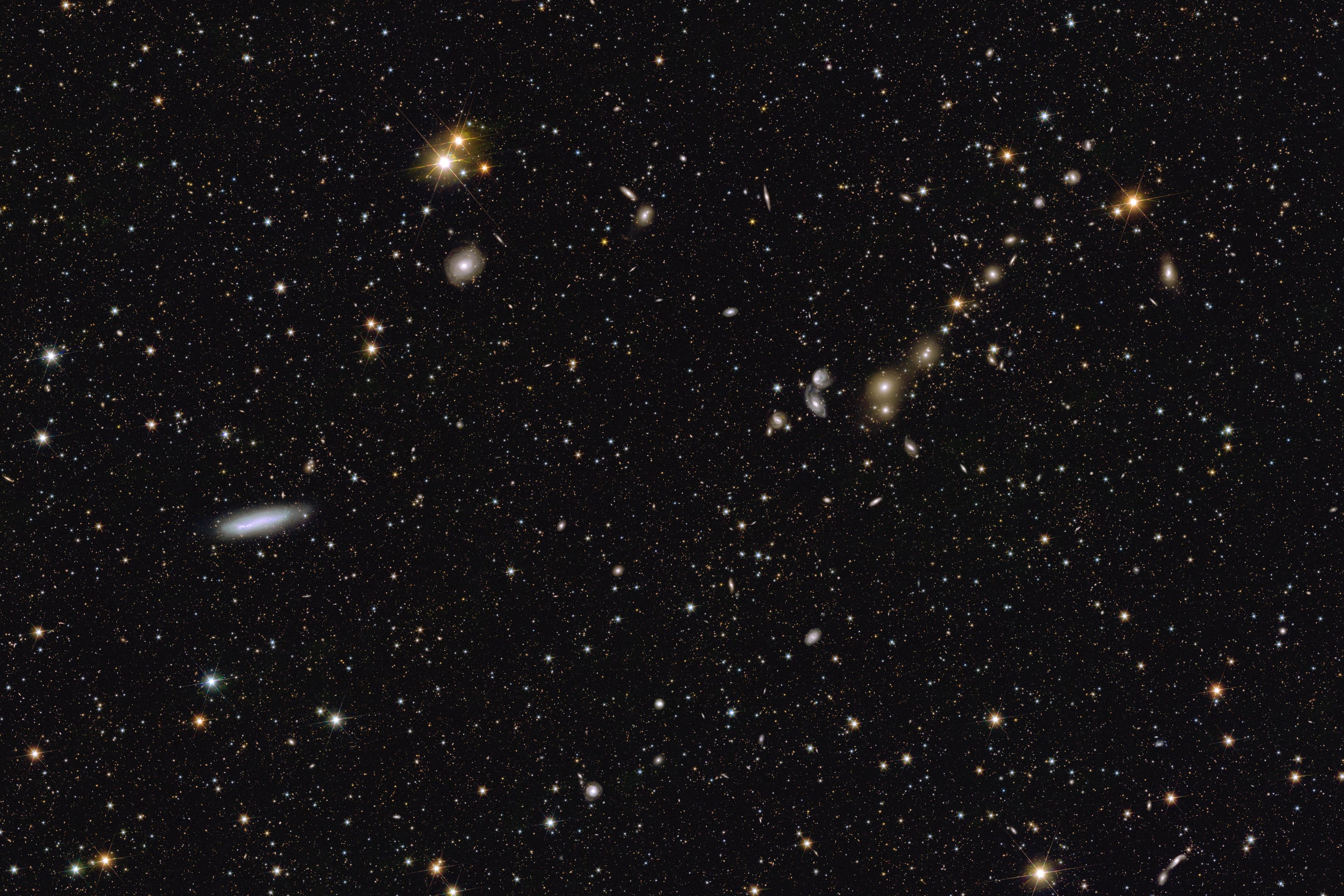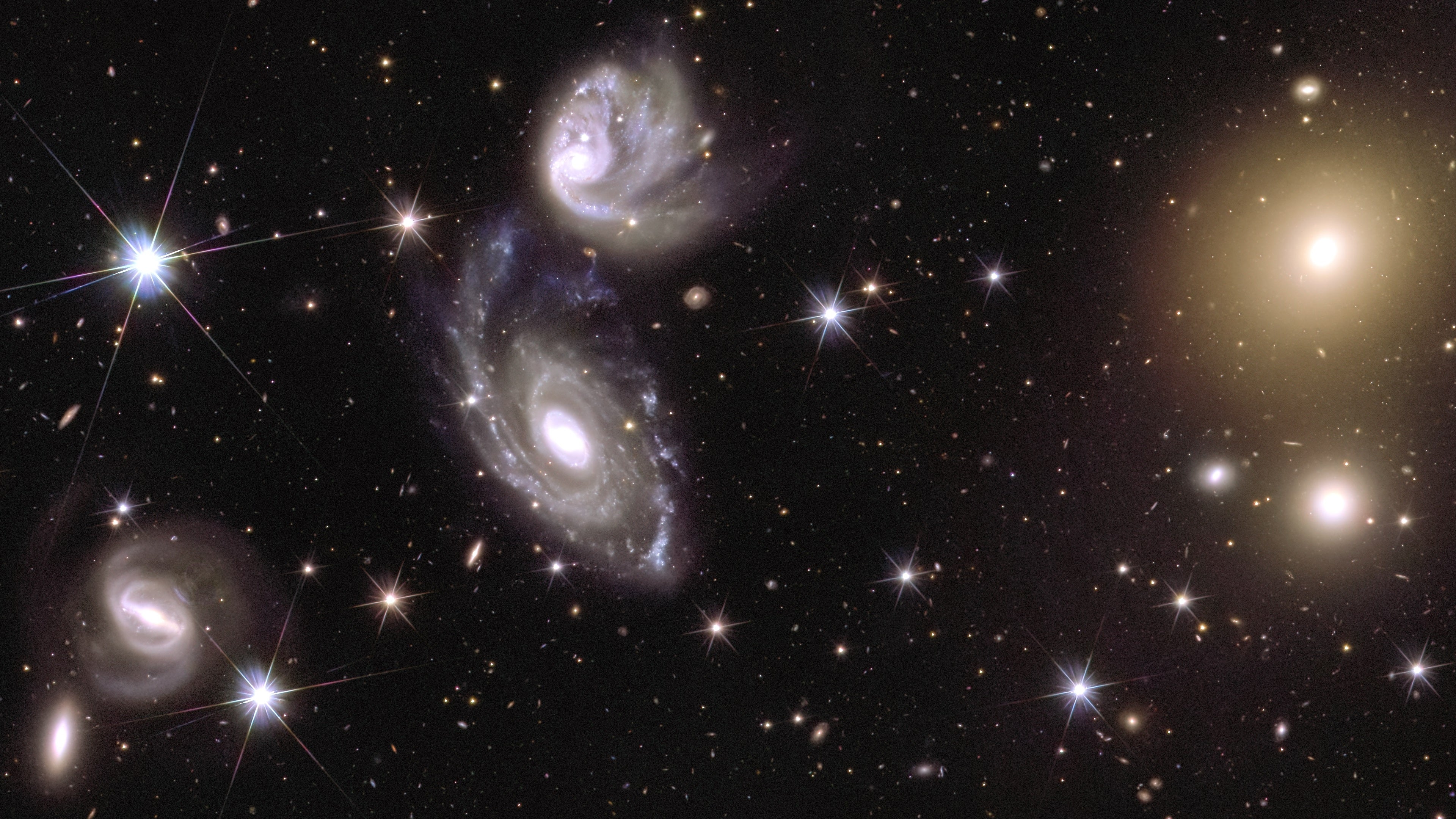Telescope reveals first piece of huge space map to uncover secrets of the universe
The mosaic is made up of 208 gigapixels of image data

Your support helps us to tell the story
From reproductive rights to climate change to Big Tech, The Independent is on the ground when the story is developing. Whether it's investigating the financials of Elon Musk's pro-Trump PAC or producing our latest documentary, 'The A Word', which shines a light on the American women fighting for reproductive rights, we know how important it is to parse out the facts from the messaging.
At such a critical moment in US history, we need reporters on the ground. Your donation allows us to keep sending journalists to speak to both sides of the story.
The Independent is trusted by Americans across the entire political spectrum. And unlike many other quality news outlets, we choose not to lock Americans out of our reporting and analysis with paywalls. We believe quality journalism should be available to everyone, paid for by those who can afford it.
Your support makes all the difference.Europe’s Euclid telescope has revealed a “stunning image” that will form the first piece of its great cosmic map in a mission to unravel the secrets of the universe.
This “huge mosaic” is made up of 208 gigapixels of image data, covering an area in the southern sky more than 500 times the area of the full moon, the European Space Agency (ESA) said.
Featuring some 14 million galaxies, it accounts for 1% of the wide sky survey that Euclid will capture over six years to shed light on two of the universe’s greatest mysteries: dark energy and dark matter.
Dark matter is made up of particles that do not absorb, reflect or emit light while dark energy is believed to be pushing galaxies apart, causing the expansion of the universe to accelerate.
Valeria Pettorino, Euclid project scientist at ESA, said: “This stunning image is the first piece of a map that in six years will reveal more than one third of the sky.

“This is just 1% of the map, and yet it is full of a variety of sources that will help scientists discover new ways to describe the universe.”
ESA said a “special feature” that can be seen in the mosaic are dim clouds in between the stars in the Milky Way which appear in light blue against the black background of space.
They are a mix of gas and dust, also called “galactic cirrus” because they look like cirrus clouds, it said.
Euclid is able to see these clouds with its highly sensitive camera because they reflect optical light from the Milky Way, the scientists said.
The optical camera, called VIS, was designed and built by an international team led by researchers at University College London (UCL) while the Open University’s (OU) Centre for Electronic Imaging (CEI) helped to develop the detectors for the VIS instrument.
Dr Jesper Skottfelt, research fellow at the OU, said: “The Euclid mission is a major step forward in our understanding of the dark universe.

“The images Euclid is capturing are a treasure trove of information that will help us unravel the mysteries of dark matter and dark energy.”
Professor Mat Page, based at UCL’s Mullard Space Science Laboratory, who is the current lead for the VIS camera, said: “Before Euclid, nobody had ever made an image of such a large area of sky at such high resolution.
“Even the zoomed in images don’t show the full resolution of Euclid’s spectacular VIS camera.
“Before Euclid, we would never be able to see the faint cirrus clouds in the Milky Way, and pick out every star that’s illuminating them in super-high resolution.
“And this is just a tiny fraction of the full area that Euclid is going to survey, so by the end we’ll have a real astronomical harvest of discoveries.”
Launched in July 2023, the Euclid mission aims to create a 3D map of the universe by observing two billion galaxies, which will help scientists understand its cosmic history.